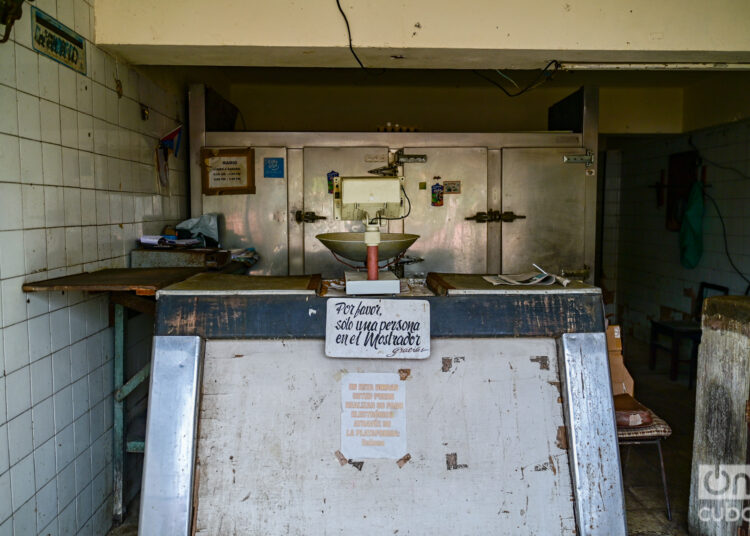In my class on contemporary Cuba, I explain to students how the equity structure that emerged in the first three decades of Cuban socialism fell into crisis in the 1990s, 35 years ago.
That equity of the 1980s was certainly not that of scarcity and the spartan radicalism of the 1960s (with almost 60,000 small private businesses until 1968). Nor was it the same as that of incessant economic growth, the increase in consumption (and its legitimization) in the 1970s. They were very different stages, but both were characterized by upward social mobility.
As Cuban sociology of the time confirmed, in the 1980s a differentiated structure of social groups had been emerging, with less social mobility. The educational revolution had multiplied the presence of technicians and professionals, and development plans had increased urbanization; in sectors such as education, health, science and technology, there were more workers than ever; the proportion of workers in production in the countryside and cities declined in relative terms, to the point that maintaining their representation in the ranks of the Communist Party of Cuba (PCC) required a quota policy.
Although that socialism was originally based on the worker-farmer alliance, the average income of a worker and a small farmer were very different. However, since these farmers were not more than a small fraction of the labor force, the pattern of equity was contained within a salary structure equivalent to the income of the majority (more than 90% of workers), with a very narrow differential: those who earned more received 400-450 pesos, and those who earned less, 100. Very few countries could have competed with this strict range.
That structure of equity did not consist only of salaries, but of an equal distribution not subject to the market, whose focal point was called “the ration book.” Neither the considerable reforms of Institutionalization (the 1970s), nor the policy of Rectification of Errors (1985-1990) against the so-called “Soviet model,” questioned the ration book, born in 1960 to combat hoarders, and perpetuated throughout the three stages prior to the crisis of the 1990s.
The ration book was a uniform redistribution mechanism that guaranteed everyone, of any age and place of residence, and at affordable prices for the seven salary groups, a supply of food, clothing, household equipment and even children’s toys, with a very broad sense of the basic food basket concept: from meat and fish, through the high quotas of sugar, rice and beans that our families consume, eggs, vegetables and greens, root vegetables such as yucca, sweet potatoes, malanga and high quality potatoes (which were exported to Eastern Europe), to coffee, cigarettes, cigars and rum. Cuban products, naturally.
Meanwhile, the industrial products ration book, which distributed all kinds of clothing (including underwear and bloomers), as well as shoes and socks, could offer fans, gas stoves, radios, coffee makers, mixers, and other kitchen appliances, depending on “what came to the store,” based on a coupon system that I could never fully understand.
Not everything was “given” through the ration book. That equity also had a meritocratic component. The right to buy appliances such as televisions, refrigerators, washing machines, was assigned to the best workers elected by vote of their colleagues in union assemblies, according to a code of merits. The acquisition of “higher-end” equipment, as it would be said now, such as motorcycles and cars, was assigned administratively, based on responsibility and qualification, and differentiated according to sectors. “They gave him a car” reflected institutional integration and was a sign of social status.
Finally, a significant segment of consumption came from a so-called parallel market (affectionately called “mercaditos”) that offered export (and import) products such as ham, cheeses, frog legs, dark beer, sausages, Bulgarian pickled products, Stolichnaya vodka, Armenian cognac, canned meats. At higher prices (which today would seem comical), and which not everyone could afford.
That differentiated equity was not measured only in income, prices, food, clothing, or consumer goods. It was also based on access to a nine-year compulsory public education, guaranteed even in the most remote places, with qualified teachers, trained in the most modern pedagogy, free books and very cheap uniforms, from elementary to university level, including postgraduate studies. And on a public health system that was equally accessible everywhere, with First World medical care, medicines included or subsidized, which did not exclude dental and ophthalmic treatments that health insurance in other places does not usually cover.
I do not know of any country where cultural consumption reached universal standards as diverse and accessible to all as in pre-crisis socialist Cuba. Seven out of ten Cubans went to the cinema every week, to see Italian, British, French, Japanese, Soviet, Polish, Hungarian, and Latin American films, and even those from the United States. Not only to listen to and dance to Cuban music, but to see the best ballet, dance, theater, and jazz groups; to buy works by the most outstanding Cuban visual artists to hang in their homes; to go to the big baseball, volleyball, basketball, and athletics events, without paying a cent. And on payday, they went to bookstores, where literature from everywhere (including African and Asian literature) was available at ridiculous prices.
This diverse cultural consumption also provided common reference patterns. For example, every Saturday night and Sunday afternoon, most Cubans were watching the same movies.
To end with the money issue, in Cuba in the 1980s, banks did not exchange dollars or other convertible currencies, the possession and use of which was prohibited; but they were not needed. Because in the family economy, remittances from the North meant very little. The exchange rate of the dollar in the informal market (about 7 pesos) was a curiosity. It was only available in stores reserved for diplomats and foreigners residing in the country.
I hope that this introduction, too long and detailed, is not taken as a nostalgic evocation, typical of old “eighties” who idealize an irrecoverable past, and increasingly redder as it moves away, like celestial bodies. Perhaps those born after 1985 will find here the map of a distant planet, of which they will have acquired notions, in versions of survivors or in the echo of the social media. My intention, more modest and practical, is to characterize differentiated stages, which are usually simplified as a block. To highlight the equity we began to fall from 35 years ago, as well as to recall social differences that were part of the prevailing pattern in each of these decades, whose experiences memory tends to erase, or to ignore in the face of the darkness of the current tunnel.
Like a roller coaster, we began to fall suddenly in the 1990s. However, racial, gender, and social class inequalities (greater or lesser “relative poverty”), between more and less prosperous regions, linked or not to policies such as atheism, ideological and moral rigidities, to practices such as corruption or nepotism, were already there in the late 1980s. Almost all of them were already present, for example, in the debates on the Rectification, initiated to criticize the management and planning system, and which quickly overflowed that agenda to encompass the system and society as a whole. With the fall of the Berlin Wall, the dismantling of the USSR and the socialist bloc, the abrupt descent on the roller coaster exposed them all everywhere and at the same time.
The crisis called the Special Period in peacetime (not a euphemism, but military language) impacted the various social groups and pushed them down, from where each one was. Naturally, this downturn brought all the inequalities to light and widened the poverty line, which had been estimated at 4-5% of the population at the end of the 1980s.
I am not going to dwell on whether the situation of 1991-1994, with blackouts lasting 16 hours at a time, the only bread in the store, the bicycle-based transportation, the drop in supplies from that ration book, the total or virtual closure of more than half of the production and service centers, the loss of purchasing power of all salaries, without a private sector, remittances, or freedom of travel abroad, was better than the current crisis or not. It is clear that that more homogeneous society that had experienced the previous socialism, impacted more evenly than today by the crisis, and with fewer escape valves, resisted the fall better than the current one. Obviously, the wear and tear of the years spent waiting for recovery policies and the expansion of inequalities have not been for nothing.
As when the roof is falling, the policies in response to the collapse were not a package of reforms aimed at remodeling the house or making structural changes, but merely emergency measures to stop it. All of a sudden, these policies created a private sector, renting land to cooperative members, legalizing self-employment and supply and demand markets, “decriminalizing” dollars, with the logical consequence of increasing inequality and without reducing poverty.
By steering these measures and establishing new international alliances, the government managed to stop the fall and a certain recovery, with what seemed to be stability. When the proposals to continue deepening the policies towards a restructuring of the system were contained, the argument was not so much to erase those inequalities, or return to the entrance of the tunnel, but to avoid the further deterioration of the standard of living of workers.
When Fidel left the government in 2006, Cuban society had been re-stratified. The coefficient that measures income inequality (Gini index) had gone from 0.25 (1989) to 0.407 (1999). Underestimated, as Mayra Espina pointed out in 2010, since it was only based on income calculations in CUP, not in CUC or foreign currencies, accepted in the savings accounts of Cuban banks.
Calculating the current income difference, as well as the poverty range; distinguishing between poor, impoverished groups, vulnerable, extreme poverty, and calculating the intersection of these groups with age, skin color, gender, social class, educational level, occupation, area of residence, type of family, requires something we do not have: public data. In the absence of this information, researchers work on samples, and offer estimates. Names like Mayra Espina, María del Carmen Zabala, Geydis Fundora, Danay Díaz, Dayma Echeverría, Reynaldo Jiménez Guethón, are among those who do these field investigations. Although they are probably not familiar to the reader, since they do not appear on television frequently or have channels on YouTube or walls on FB. Because there’s plenty to be said about this, I will leave my comments on the results for a future article.
A friend says that he prefers to keep his opinions to himself, since research like this “is not known to him.” Indeed, I have learned that perceptions about a problem can be as important, and sometimes more so, than the problem itself. Since many behaviors and attitudes respond more to shared perceptions than to verifications. This occurs in cases as different as emigrating to an unknown country, even having a relatively high income, or, let’s say, reacting to the threat of a U.S. president announcing the annexation of an entire country. This significance of perceptions is greater in the field of sociology and political science, to which I dedicate myself despite everything.
Since published national surveys are conspicuous by their absence, it occurred to me to try one on the networks, on perceptions about the cause of inequalities. To avoid digressions, the question had the simple form of a syllogism:
- The Chinese and Vietnamese reforms are celebrated as effective.
- In China and Vietnam, reforms have deepened inequality.
- The manifestations of inequality in Cuba (segmentation of consumption, dollarization, etc.) are the result of the acceleration of reforms.
Question: Is this reasoning correct?
To my surprise, 107 readers responded to this question, of which almost 80 explained their answers, including some academics. I will use them as study material to close this article, citing some fragments, most of which do not require comment. Here they are:
No. Inequalities were already present before the reforms. They have undoubtedly increased.
No. Many of the inequalities come from prohibitions and bad public policies.
No. The Gini indices (one of those used to measure inequality) as well as the number of poor people have been reduced in Vietnam and China.
We are not China or Vietnam and that is the first “trap” of the local syllogism, we are an open economy in a much more adverse environment than the one unimaginable by both friends.
No. In Cuba there is no reform, there is improvisation, contingency. A reform requires a project. What is our project?
No. The crisis brings inequalities. Reform could be the solution to the crisis. But there has been no such thing in Cuba that can be called reform. Economic policy errors exacerbate the crisis.
No. In an economy where the weight of the state enterprise is so great, inequality is due to the inability of said enterprise to pay high remunerations. Most state enterprises cannot compete with the private sector in this regard.
Yes, but. The manifestations of economic inequality in Cuba are an obligatory step in the process of generating all the possible wealth that allows it to be distributed to those who are at a disadvantage.
Obviously, No. The issue is complex, but there is no alternative to reform. And it looks more like what they have done in Vietnam and China. Inequality is a problem, but the essential problem is poverty!!!!, which continues to grow!!! A certain level of inequality is inevitable, otherwise, under the current conditions, there will be no growth.
A definitive Yes. Economic reform has generated private entrepreneurship, which already implies the formation of a segment that is different from the rest. If we have had decades of reforms, and inequality has grown, then at least there is a correlation between the two. The mechanism is the concentration of part of the income and wealth in one segment while others stagnate or progress more slowly.
No. The great push into the abyss of inequality that we are currently experiencing in Cuba is more a consequence of erring monetary policy decisions than of the minimal changes made as part of the reform.
No. The lack of reforms in the old model has increased the inequalities that already existed in a hidden manner. We have not experienced reforms, but rather measures to maintain the old model. And inequalities, such as loss of achievements, etc. are nothing other than unforeseen consequences of no change.
No. Inequalities in Cuba are linked to a crisis of more than three decades. It is the crisis of a system. The reforms have failed, except in commercializing society. Their effects have never been contingent, neither in the 1990s nor now, such as the sustained increase in inequalities. Then we had a powerless State that did not accept that result as legitimate, and since 2008 that changed, when it abandoned its welfare character.
Yes…but in the case of China and Vietnam, it compares the rise in the standard of living, the economic progress resulting from the reforms with the rise in inequality. In the case of Cuba, where the reforms are totally insufficient.
Yes. Inequality is a process that has advanced more than expected and the reforms (inconsequently applied) have contributed to its expansion, especially the Reorganization.
No! The reform creates wealth and inequality is obvious. “Market Socialism” allowed the creation of wealth that, in addition to creating capitalists, allowed, with an adequate policy of socialist distribution, to substantially improve the quality of life of the population.
Inequality in China is the effect of a transformation of the growth model. It increased an indicator of relative poverty (inequality) while reducing absolute poverty (with regional differences). In Cuba, the increase in the two types of poverty (relative and absolute) is the effect of the collapse of the growth model and of ineffective public policies to manage stagnation.
I greatly appreciate the contribution of all those who commented on my question.
I just want to note one side data about China and Vietnam. As for the former, the Gini index rose steadily for 16 years (1996-2012), from 35.2 to 42.2. It then fell, until 2021, to 37.5; and in 2024 it was estimated at 46.5. As for Vietnam, it rose for 18 years (1992-2010), from 35.7 to 39.3. It then fell a little and now remains at 38.7. By the way, the perception of corruption in Vietnam improved from a score of 26 (2001) to 42 (2022), although it fell in 2023. Cuba’s fell from 44 to 42 (in Latin America it is among the top 12).
Finally, I submitted my syllogism to the prominent economist Carmelo Mesa-Lago, who has just written a book on Vietnam, China and Cuba. Here is his response:
“Yes, the reforms have increased inequality in China and Vietnam, less in the latter than in the former. Cuba is better off in that respect, because the reforms have been very timid and ineffective. The reforms have deepened inequality in Cuba, but less than in the other two countries. The dilemma is: a much greater well-being of the people versus greater inequality. I lean towards the former.”
We will return to the subject; although without reliable statistics we will have to continue groping.










